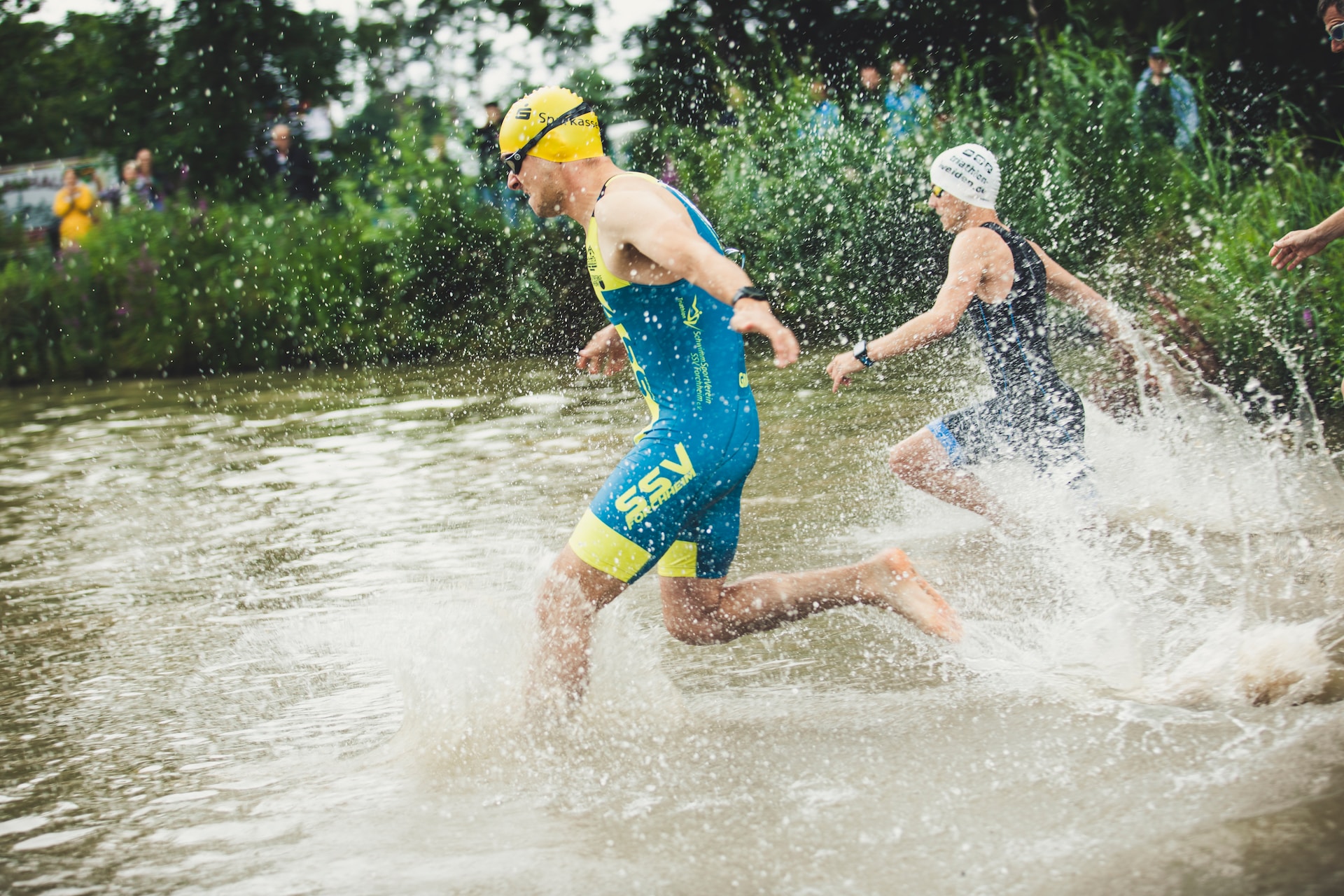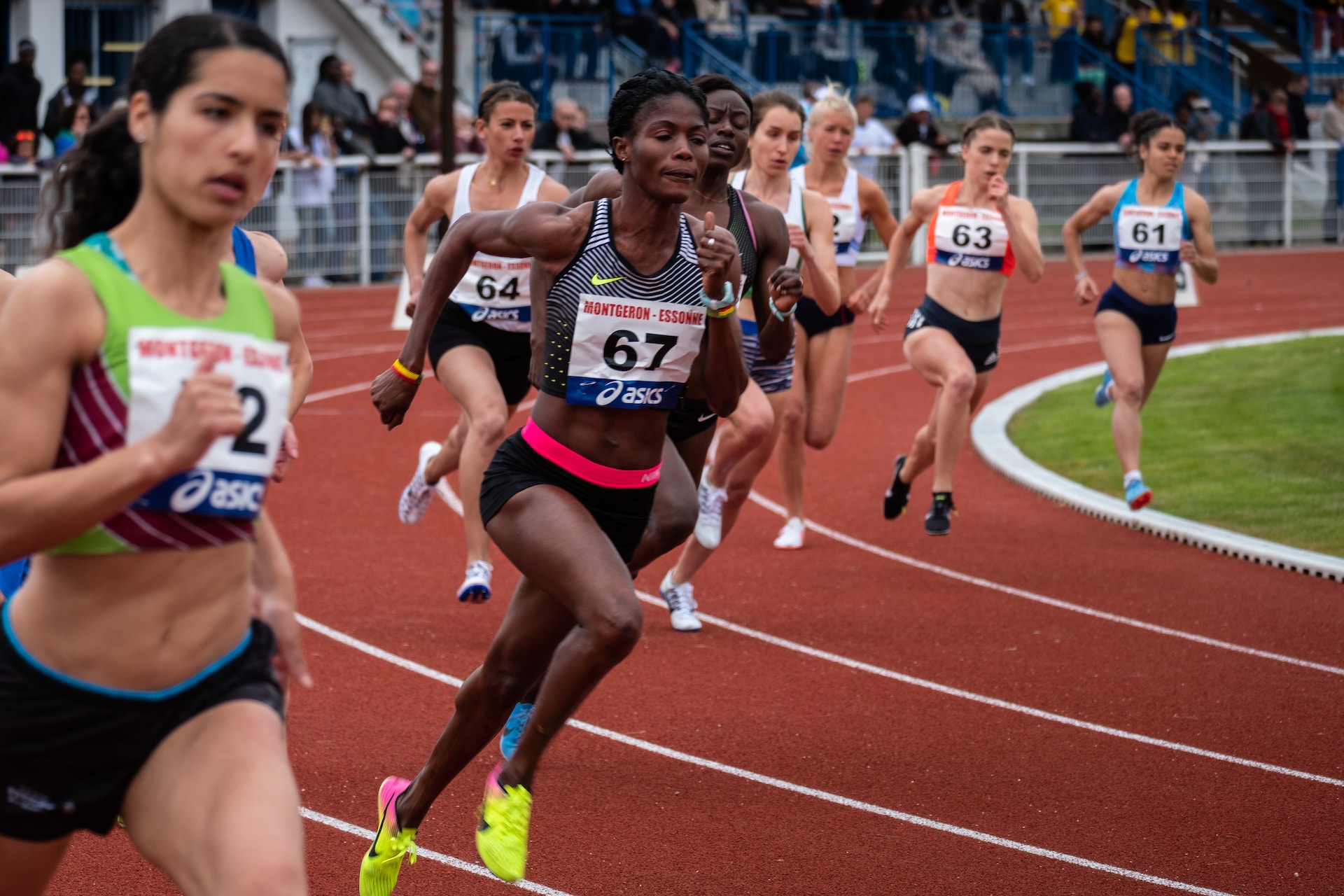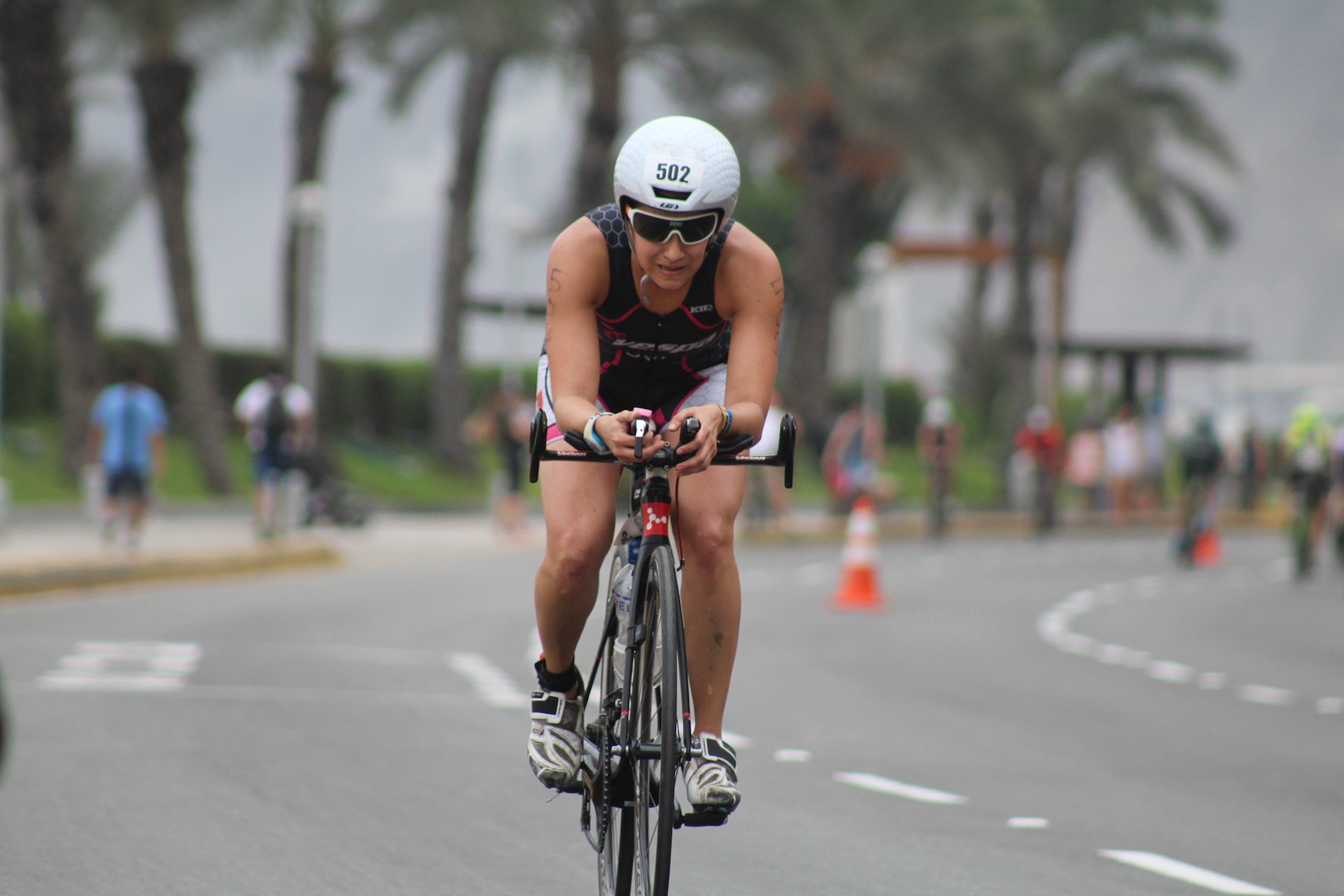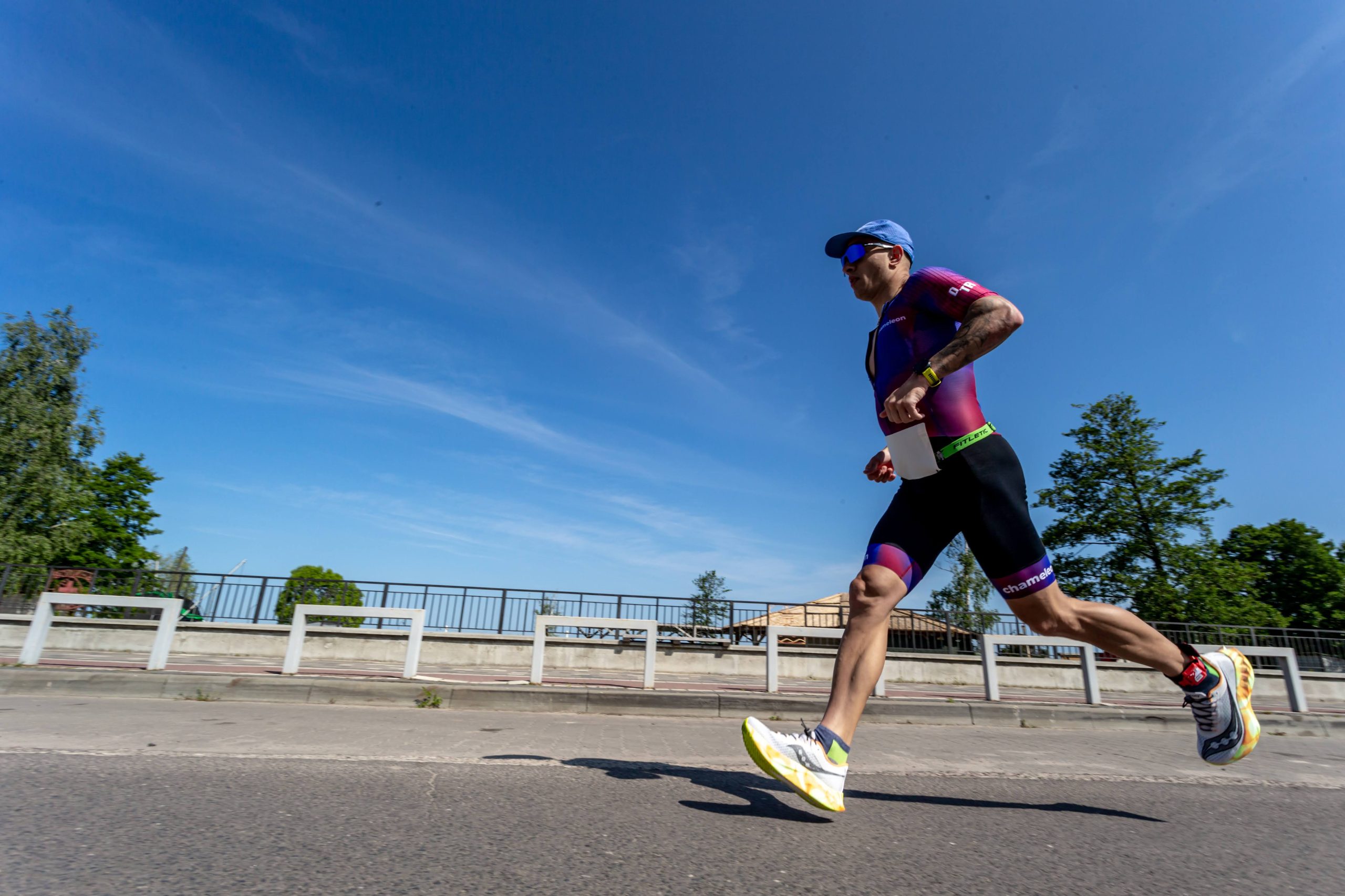When it comes to endurance sports, triathlons are in a league of their own.
For those unfamiliar with triathlon, it is a multi-stage competition that includes three consecutive endurance disciplines.
The traditional triathlon format includes swimming, cycling, and running over various distances.
Triathletes compete for the fastest time over the course.
It includes timed “transitions” between the individual components of swimming, cycling, and running.
Here, we explore the different types of triathlons to help you understand the sport better and find the right fit for your fitness goals.
What is a Sprint Triathlon?
It is one of the shortest triathlon distances and is often considered the most affordable triathlon type.
Sprint distance is ideal for beginners starting to train in the triathlon world.
- Swim: Typically starts with a 0.25 to 0.5-mile swim (approximately 400 to 800 meters).
- Bike: Followed by a 10 to 15-mile bike ride (about 16 to 24 kilometers).
- Run: Concludes with a 5K run (3.1 miles).
There are a few types of sprint races, including super sprint triathlon.
What is a Super Sprint Triathlon?
A super sprint triathlon is a shorter version of the traditional triathlon race format, which typically consists of swimming, cycling, and running segments.
While the specific distances can vary depending on the event organizer, a super sprint triathlon typically involves shorter distances compared to standard or Olympic-distance triathlons.
Here are the approximate distances for each segment in a super sprint triathlon:
- Swimming leg: Usually between 200 to 400 meters, which is typically done in a swimming pool or a calm, open water environment such as a lake or bay.
- Cycling leg: The distance is typically around 10 kilometers (6.2 miles), though it can vary slightly.The cycling segment is usually done on roads or designated bike paths.
- Running leg: It is usually around 2.5 to 3 kilometers (1.5 to 1.9 miles).The running portion is generally done on a course that includes paved surfaces and may include some off-road sections.
Super sprint triathlons are often popular among beginners or those who are new to triathlon racing because they offer a shorter and less intimidating option compared to longer distances like the sprint, Olympic, or Ironman triathlons.
They can also be a great way for experienced athletes to work on their speed and transition times.
Who Should Try a Sprint Triathlon?
Here are a few reasons why spring or super sprint triathlon distance triathlon is a great idea:
- Achievable Challenge
Anyone with motivation and commitment can complete a sprint triathlon.
It’s a fantastic way to test your endurance and experience the thrill of crossing the finish line.
- Cross-Discipline Training
Engages multiple muscle groups, promoting well-rounded strength.
- Great for Weight Management
You will burn a lot of calories through swimming, biking, and running.
- Good for Longevity and Heart Health
Regular moderate-intensity exercise improves heart health and increases lifespan.
- Personal Achievement
Crossing that finish line brings immense pride and bragging rights.
Remember, sprint distance triathlons offer a taste of the multisport world, and they’re within reach for athletes of all levels. Dive in, train, and embrace the exhilaration!
So, if you’re considering a beginner triathlon, a sprint is a great choice.
What is an Olympic Distance Triathlon?
An Olympic triathlon is also known as a standard distance triathlon or middle distance triathlon. It is a type of triathlon included in the Olympic Games program, hence the name.
The distances for each segment in an Olympic international distance triathlon are as follows:
Swimming: The swim segment is typically 1.5 kilometers (0.93 miles) long.
This distance is usually completed in open water, such as a lake, river, or ocean. The swim can be done in a single loop or multiple loops, depending on the course design. Here, we tell you more about the joys and challenges of river swimming.
Cycling: The cycling segment of an Olympic distance triathlon is usually 40 kilometers (24.8 miles) long.
Athletes ride their bikes on roads or designated bike courses, completing multiple laps if necessary to reach the total distance.
Running: The run segment in an Olympic distance triathlon is typically 10 kilometers (6.2 miles) long.
This segment is usually completed on roads, paved paths, or trails, and like the bike course, may involve multiple laps depending on the course layout.
Many athletes use Olympic distance triathlons as a stepping stone to longer-distance triathlon races such as half Iron distance or Ironman world championships.
Who Should Try an Olympic Triathlon?
An Olympic distance triathlon can be a challenging but rewarding experience suitable for a wide range of athletes, from beginners to experienced triathletes.
Beginners
While an Olympic distance triathlon may seem daunting at first, many beginners find that with proper training and preparation, they can successfully complete the race.
It’s essential for beginners to gradually build up their fitness and endurance through structured training programs before attempting the race.
Intermediate Triathletes
For athletes who have completed shorter-distance triathlons like sprint triathlons and are looking to challenge themselves further, an Olympic distance triathlon can be a natural progression.
It offers a greater test of endurance and stamina while still being achievable with the right training.
Experienced Athletes
Even seasoned triathletes may find value in participating in Olympic distance triathlons.
These races provide an opportunity to work on pacing, race strategy, and overall fitness. They can also serve as a tune-up or preparation race for longer-distance events like half Ironman or Ironman triathlons.
Fitness Enthusiasts
Individuals who are looking for a new fitness challenge or goal may find an Olympic distance triathlon to be a motivating target.
Training for and completing such an event can provide a sense of accomplishment and improve overall health and fitness levels.
Ultimately, anyone who is willing to commit to a structured training plan, put in the necessary effort and dedication, and embrace the challenge of swimming, cycling, and running can consider attempting an Olympic distance triathlon.
It’s important to consult with a coach before embarking on any new training regimen, especially if you have any underlying health concerns or medical conditions.
What is a Half-Ironman Triathlon?
The Half-Ironman, also known as Ironman 70.3 (for the total distance covered in miles).
It includes a 1.9-kilometer swim, a 90-kilometer bike ride, and a 21.1-kilometer run (half-marathon).
Distances
Here’s a breakdown of the distances for each segment in a Half-Ironman triathlon:
- Swimming: The swim segment typically covers 1.2 miles (1.9 kilometers) and is usually done in open water, such as a lake, river, or ocean.Participants may swim in a single loop or multiple loops, depending on the course design.
- Cycling: The bike segment of a Half-Ironman triathlon is 56 miles (90 kilometers) long.Athletes ride their bikes on roads or designated bike courses, completing multiple laps if necessary to reach the total distance.
- Running: The run leg in a Half-Ironman triathlon is a half marathon distance, which is 13.1 miles (21.1 kilometers).This segment is typically completed on roads, paved paths, or trails, and like the swim and bike courses, may involve multiple laps depending on the course layout.
Who Should Try a Half-Ironman Triathlon?
Half-Ironman triathlons are great for those who’ve built substantial endurance through consistent triathlon training and are ready to push their limits.
Experienced Triathletes
Athletes who have already completed shorter-distance triathlons, such as sprint race or Olympic distance races, and are looking to challenge themselves further may find the Half-Ironman distance appealing.
Athletes Seeking a New Challenge
Individuals who have a solid fitness base and are looking for a new and challenging goal might consider attempting a Half-Ironman. It can provide a sense of accomplishment and motivation to train consistently.
Those Considering Full Ironman
Athletes who aspire to complete a full Ironman triathlon (140.6 miles) may use the Half-Ironman world championship as a stepping stone or as part of their training regimen.
It allows them to gain valuable experience with longer distances and multisport racing.
Fitness Enthusiasts
Individuals who enjoy endurance sports and have a strong commitment to fitness may be drawn to the challenge of a Half-Ironman triathlon journey.
It can be a rewarding way to push physical limits and achieve personal fitness goals.
Those with Time to Train
Successfully completing a Half-Ironman requires consistent and structured training over several months. Athletes who have the time and flexibility to dedicate to training may find the Half-Ironman distance within reach with proper preparation.
Individuals Seeking a Balanced Challenge
Half-Ironman triathlons offer a balanced test of swimming, cycling, and running abilities.
Athletes who excel in multiple disciplines and enjoy the variety of multisport racing may find the Half-Ironman distance particularly appealing.
It’s important for anyone considering a Half-Ironman triathlon to understand the commitment involved and to undertake appropriate training and preparation.
Consulting with a coach or experienced triathlete can provide valuable guidance on training plans, race strategy, and preparation for the event.
What is an Ironman Distance Triathlon?
The Ironman triathlon is the longest and most challenging triathlon type.
It consists of a 2.4-mile (3.86 kilometers) swim, a 112-mile (180.25 kilometers) bike ride, and a full marathon run of 26.2 miles (42.2 kilometers), raced in that order without a break.
Athletes have to complete the entire course within a time limit, typically around 17 hours, though this can vary depending on the specific event.
Ironman triathlons are known for their grueling nature and are considered the pinnacle of endurance sports.
They require months of rigorous training and preparation to build the necessary fitness, endurance, and mental toughness to complete the race.
The Ironman Triathlon originated in Hawaii in 1978 and has since grown into a global series of events, with races held in various locations around the world.
Who Should Try an Ironman Triathlon?
Ironman triathlons are for elite athletes who are ready to take on the ultimate challenge.
This type of triathlon requires immense preparation and a high level of physical fitness.
Competing in an Ironman race is a significant achievement and a lifelong goal for many triathletes.
It requires not only physical fitness but also mental resilience, as athletes must overcome fatigue, pain, and challenges throughout the race to reach the finish line.
What is Ultra Triathlon?
An Ultra Triathlon is an incredibly tough race where athletes swim, bike, and run much farther than in a regular triathlon.
While there isn’t a universally defined standard for Ultra Triathlons, they typically involve significantly longer distances. Some common variations include:
Double Ultra Triathlons
Athletes cover double the distances of a traditional Ironman Triathlon.
For example, this might include a 7.6-mile (12.2 kilometers) swim, a 224-mile (360 kilometers) bike ride, and a 52.4-mile (84.4 kilometers) run.
Triple Ultra Triathlons
In this format, athletes must complete three times the distances of a standard Ironman.
This could involve an 11.4-mile (18.4 kilometers) swim, a 336-mile (540 kilometers) bike ride, and a 78.6-mile (126.5 kilometers) run.
Quadruple Ultra Triathlons
As the name implies, athletes in this event cover four times the distances of a standard Ironman Triathlon.
Ultra Triathlons are known for their extreme physical and mental demands, requiring participants to push their limits over long periods of time.
They are often organized as independent events or smaller-scale races, attracting a dedicated community of ultra-endurance athletes seeking the ultimate challenge in triathlon racing.
Training for and completing an Ultra Triathlon requires meticulous preparation, careful pacing, and unwavering determination.
Choosing the Right Triathlon for You
Now that we’ve explored the different types of triathlons, the decision lies in your hands.
Your choice should depend on your current fitness level, endurance experience, and personal goals.
Remember, no matter the distance, completing a triathlon is an incredible achievement that speaks volumes about your dedication and tenacity.
Whatever your choice, happy training, and see you at the finish line!
Make sure you check out training programs to get ready for your next triathlon events.










